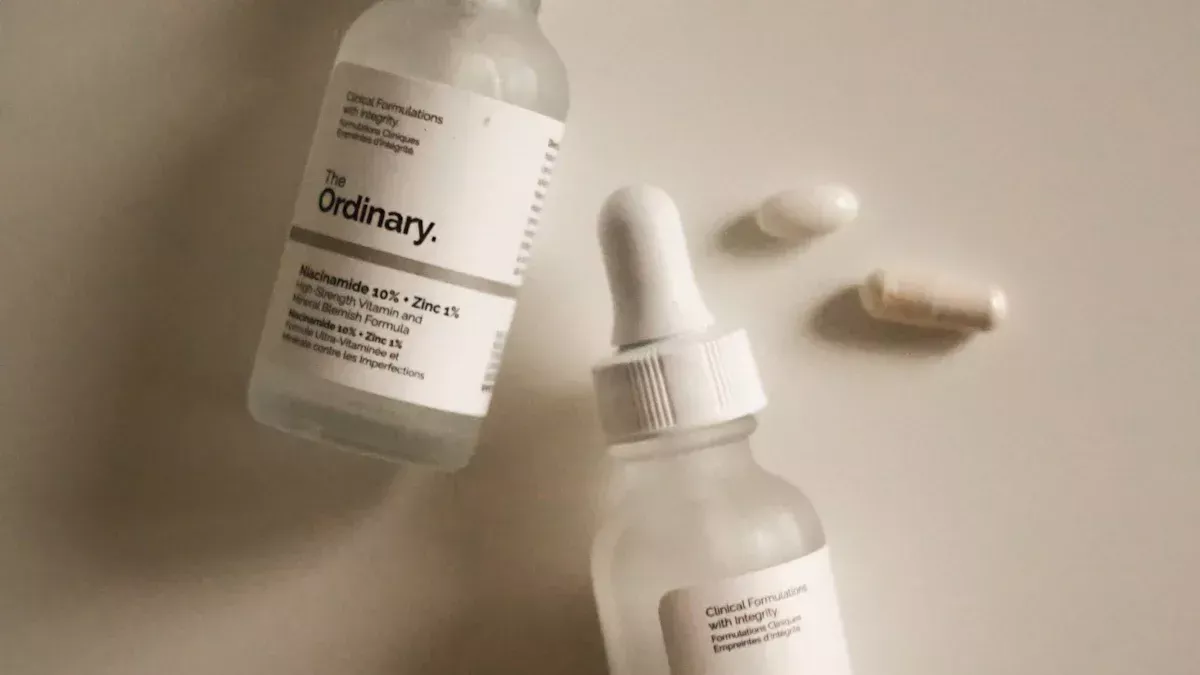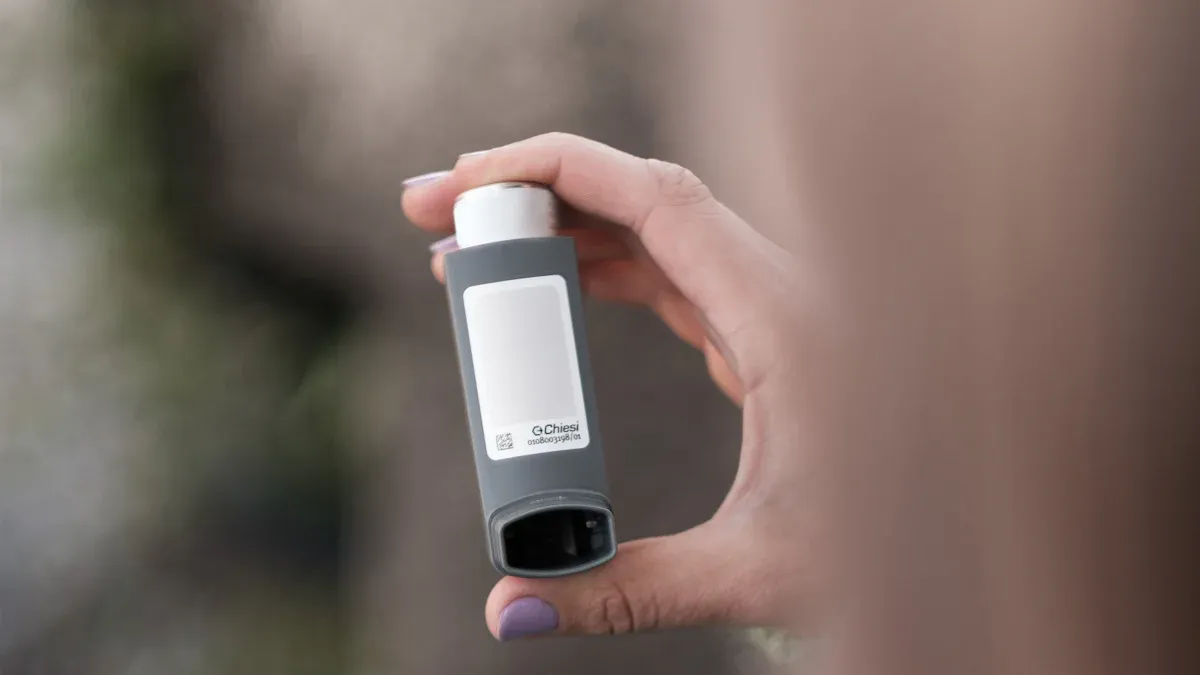
Aerosol pharmaceutics uses pressurized systems to give medicine as a fine mist or spray. Non-aerosol pharmaceutics gives medicine in forms like tablets or creams. It does not use a pressurized device. Aerosol pharmaceutics often needs the patient to use the device the right way. The patient must also coordinate their breathing. Non-aerosol options do not need this.
Aspect | Aerosol Pharmaceutics | Non-Aerosol Pharmaceutics |
Device Types | Inhalers, nebulizers, sprays | Tablets, creams, non-aerosol sprays |
Delivery Technique | Needs breath coordination | No special technique needed |
Patient Education | Very important | Not as important |
Knowing these differences helps patients get the right amount of medicine. It also helps them have better treatment results.
Key Takeaways
Aerosol pharmaceutics use pressurized tools to send medicine fast and exactly to the lungs or skin.
Non-aerosol pharmaceutics give medicine as tablets or creams and do not need special tools or careful breathing.
Picking the best medicine form depends on the patient's age, if they can use the tools, and how quickly the medicine should work.
Aerosol tools give quick help and exact amounts but need the right use and some training to work well.
Non-aerosol medicines are easier for most people to use and are good for long-term or surface care.
Key Differences
Definitions
Pharmaceutical aerosols use gas pressure to give medicine as a mist, foam, or stream. This way, the drug can go straight to the lungs or skin. Devices like inhalers or sprays help with this. Non-aerosol pharmaceutics use hand pumps to release medicine. These forms make bigger drops and treat the skin or mucous membranes. Aerosol pharmaceutics use pressurized systems for targeted delivery. Non-aerosol forms use manual force and give less exact doses.
Note: Pharmaceutical aerosols can give medicine for breathing in or putting on skin. Non-aerosol forms treat surface problems and do not go deep into the body.
Core Distinctions
Pharmaceutical aerosols and non-aerosol pharmaceutics are different in many ways. The table below shows the main differences:
Feature | Pharmaceutical Aerosols | Non-Aerosol Pharmaceutics |
Delivery Mechanism | Uses gas pressure and special device | Uses hand pump or manual use |
Particle Size | Fine mist or foam | Bigger drops |
Target Area | Lungs, skin, mucosa | Skin, mucosa |
Dose Precision | High (exact dose possible) | Less exact dose |
Onset of Action | Fast (especially for breathing in) | Slower |
Example Devices | Inhalers, nasal sprays, foam dispensers | Creams, lotions, non-aerosol sprays |
Pharmaceutical aerosols send drugs right to the lungs. They skip first-pass metabolism, so more drug reaches the target. Devices like metered-dose inhalers, dry powder inhalers, and nebulizers help with this. This way gives fast absorption and targets the lungs.
Non-aerosol pharmaceutics use absorption through the body. They do not aim for the lungs. These forms include tablets, creams, and non-aerosol sprays. They often need bigger doses because the drug travels through the body first.
Pharmaceutical aerosols use different ways to deposit medicine:
Inertial impaction
Sedimentation
Diffusion
Interception
Electrostatic effects
These ways depend on particle size, shape, charge, airway shape, and how the patient breathes. Aerosol devices can give medicine in smaller doses because they target the lungs. But they can cause medicine to build up in the throat, which may cause side effects. Non-aerosol forms do not have this problem but may work slower.
Aerosol pharmaceutics are good for drugs that need to work fast or go straight to the lungs. Non-aerosol forms are better for surface problems or when slow absorption is okay. The choice between aerosol and non-aerosol forms depends on the illness, what the patient needs, and how fast the medicine should work.
Aerosol Pharmaceutics
Delivery System
Pharmaceutical aerosols use special containers with pressure. These containers give medicine as a mist, spray, or foam. The pressure comes from a gas or liquid inside. When you press the button, the medicine comes out through a nozzle. A valve controls how much medicine is released each time. The valve also keeps air, water, and light away from the medicine. The container must be strong to hold the pressure and keep the drug safe. It can be made from glass, aluminum, or plastic. The material depends on the type of aerosol. The pressure inside helps make the medicine into a fine mist. This lets the medicine go where it is needed. Pharmaceutical aerosols can be used in many ways. They can be used for breathing in, nose, mouth, skin, vagina, or rectum.
Advantages
Pharmaceutical aerosols have many good points:
Metered dosing: Each spray gives the same amount of medicine. This makes the dose more exact than other forms.
Rapid onset: The medicine gets to the lungs or skin fast, so it works quickly.
Targeted delivery: The drug goes right to the place that needs help, like the lungs in asthma.
Drug stability: The pressure keeps the drug safe from air and water.
Convenience: The devices are small and simple to use.
Studies show that pressurized inhalers work well for asthma and other lung problems. Spacers and holding chambers help people who have trouble with timing their breath. These tools make it easier to get the right amount of medicine, especially for kids.
Common Uses
Pharmaceutical aerosols are used for many health problems. Here are some examples:
Condition | Device Type | Example of Aerosol Application |
Asthma | Inhaler (pMDI) | Beta-2 agonist bronchodilator |
COPD | Inhaler, nebulizer | Steroid or anticholinergic aerosol |
Skin conditions | Topical spray | Corticosteroid spray |
Nasal congestion | Nasal spray | Decongestant pharmaceutical aerosols |
Inhalers and nebulizers are common for breathing problems. They give quick help and exact doses. Sprays are also used for skin problems. They put medicine right on the spot that needs it.
Non-aerosol Pharmaceutics
Delivery System
Non-aerosol pharmaceutics use containers that do not have pressure. People use their hands to get the medicine out. These do not use any gas or propellants. The medicine often has more liquid in it. It comes as creams, ointments, tablets, or sprays. The patient squeezes, pumps, or swallows the medicine. The device does not give the same dose every time. It gives bigger drops or solid pieces. These treat the skin or go into the body by soaking in.
Non-aerosol forms do not need special tools. This makes them easy to keep and move.
Advantages
Non-aerosol pharmaceutics have some good points:
You do not need to match your breath.
It is good for people who cannot use inhalers.
It lets you change the dose if needed.
It works well for long-term use.
It can lower the chance of throat problems.
But there are some downsides:
It does not give the exact amount each time.
It may work slower than aerosol forms.
You might need more medicine to get the same result.
Dry powder inhalers need less skill than pressurized inhalers. Still, many people use them the wrong way. Studies show up to 54% of users make mistakes. Using it wrong means less medicine gets where it should. This can make healthcare cost more. Training helps but does not fix every problem.
Common Uses
Non-aerosol pharmaceutics come in many types. They help with lots of health problems. The table below shows common products used outside the hospital:
Product Type | Example Medicines | Common Uses |
Tablets | Metformin, Ibuprofen, Amoxicillin | Diabetes, pain, infection |
Capsules | Gabapentin, Atorvastatin | Nerve pain, cholesterol |
Creams/Ointments | Hydrocortisone, Fluconazole | Skin inflammation, fungus |
Non-aerosol sprays | Cetirizine, Fluticasone | Allergies, nasal symptoms |
People take tablets and capsules for long-term sickness. Creams and ointments help with skin issues. Non-aerosol sprays are used for allergy relief. These forms cover many health needs outside the hospital.
Choosing the Right Form
Patient Factors
Picking the best way to give medicine depends on the patient. Age is important. Kids and older people may not use inhalers well. They might not have strong fingers. Some may not understand how to use the device. People who cannot move well have trouble with metered dose inhalers. Spacers and nebulizers can help these people. Learning how to use the device is also important. Patients who know what to do get better results. The type of sickness and where care happens also matter. Fast-acting aerosols are good in emergencies. Non-aerosol forms work for daily care.
Key things to think about are:
Age (kids and older people have special needs)
How well someone can move (some need easy devices)
Hand skill and thinking ability (these affect using the device)
Other health problems (like arthritis or weakness can make it hard)
Learning and practice (help people use devices better)
Tip: Doctors and nurses should pick a device that matches what the patient can do. This helps people get better faster.
Clinical Scenarios
Different health problems need different ways to give medicine. The table below shows some common cases and the best choices:
Scenario | Preferred Form | Reason |
Acute asthma attack | Aerosol (inhaler) | Works fast and goes right to the lungs |
Young child with poor coordination | Nebulizer | Easy to use and does not need much skill |
Elderly patient with arthritis | Non-aerosol (tablet) | Simple to take and does not need strong hands |
Skin infection | Cream or ointment | Goes right on the skin and is easy |
Chronic lung disease, good technique | Aerosol (inhaler) | Gives the right amount and works well |
Doctors and nurses should think about:
If the patient can use the device
If the medicine is working and if the patient uses it right
If the device is easy to get and if insurance pays for it
If they know how to teach about the device
Checking how the patient uses the device and asking how they feel helps make sure the medicine works. If the patient has trouble or does not get better, changing the device or form may help. Picking the right way for each person helps them stay healthy.
Conclusion
Aerosol pharmaceutics use pressurized devices to give medicine. These devices help send drugs right where they are needed. Non-aerosol forms need people to use their hands. They often do not give the exact amount each time. Studies show aerosol devices can send medicine to the lungs or nose. This helps the drug work better and lowers side effects. Cost is important when picking which form to use. Generic drugs cost less and help people take their medicine. Aerosol types affect the environment in different ways. Bag-on-valve aerosols make less pollution and waste than old types.
Environmental Aspect | Traditional Aerosol Impact | Bag on Valve (BOV) Impact |
Propellant Emissions | VOC release | Zero VOC emissions |
Product Waste | 5-10% unused | Nearly complete evacuation |
Carbon Footprint | Higher | Lower |
Patients and doctors should think about device design, cost, and the environment. They also need to follow rules for safety. Learning more helps clear up wrong ideas and keeps treatment safe and helpful.
FAQ
What is the main benefit of aerosol pharmaceutics?
Aerosol pharmaceutics sends medicine right to the spot. It works quickly and gives an exact amount. Many people like it because it helps fast.
Can children use aerosol devices safely?
Kids can use aerosol devices if an adult helps. Spacers or holding chambers make it simpler. Doctors teach families how to use these tools.
Are non-aerosol medicines less effective?
Non-aerosol medicines help with many health problems. They might take more time to work. Some people need bigger doses. It depends on the sickness and what the patient needs.
How should patients choose between aerosol and non-aerosol forms?
Patients should ask their doctor for advice. The best choice depends on age, skill, sickness, and comfort. Doctors help pick the right form for each person.





















